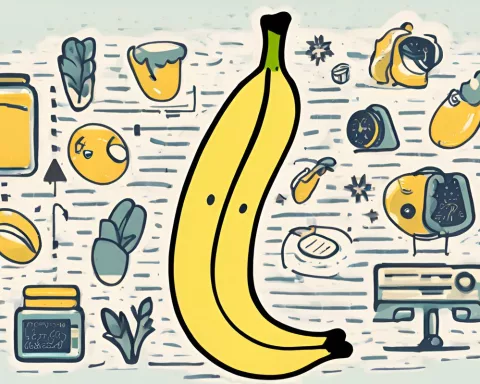South Africa’s job market experienced a surge in employment rates and a decrease in unemployment statistics in the third quarter of 2023. The official unemployment rate fell to 31.9%, and the number of employed individuals rose to 16.7 million. The Finance sector added the most job openings, and KwaZulu-Natal led in job creation. Youth unemployment decreased, indicating a decrease in the unemployment rate from the previous quarter. While there are still challenges in the job market, the transformation shows the potential for recovery and growth.
What were the employment trends in South Africa in the third quarter of 2023?
In the third quarter of 2023, South Africa’s job market saw a surge in employment rates and a decrease in unemployment statistics. The official unemployment rate slipped to 31.9%, and the tally of those gainfully employed rose by 399,000 to hit 16.7 million. The Finance sector added 237,000 new job openings, and KwaZulu-Natal took the lead in job creation with an impressive rise of 152,000. Youth unemployment decreased by 174,000 to 4.6 million, indicating a 1.9 percentage point decrease in the unemployment rate from the second quarter’s 45.3% to the third quarter’s 43.4%.
A Glimpse of Progress in South Africa’s Workforce
In the third quarter of 2023, South Africa’s employment landscape saw a significant shift, as indicated in the Quarterly Labour Force Survey (QLFS) conducted by Statistics South Africa. The job market exhibited a vibrancy, characterized by a surge in employment rates and a decrease in unemployment statistics. This gave a positive outlook on the recovery of the country’s economy.
The official unemployment rate in this quarter slipped to 31.9% from the previous 32.6%, registering a decrease of 0.7 percentage points. This depreciation was reflected in the employment increase. The tally of those gainfully employed rose by 399,000 to hit 16.7 million, a stark change from the previous quarter’s 16.3 million.
The survey also highlighted a drop in the number of jobless individuals. The total dipped by 72,000, making the new count to stand at 7.8 million. Furthermore, there was a reduction of 160,000 in the number of economically inactive individuals, excluding those discouraged from seeking work. This resulted in a new figure of 13.1 million. The number of discouraged job seekers decreased by 26,000, leading to a total decrease in the economically inactive population by 186,000.
Sectoral and Regional Employment Developments
The formal sector of the economy exhibited healthy growth, with an employment addition of 287,000. The informal sector followed suit, but at a slower rate, marking an increase of 29,000. The Finance sector was the main job propeller, introducing 237,000 new job openings. Other sectors recording significant employment gains included community and social services, with an addition of 119,000 jobs, and agriculture, boasting a growth of 61,000. However, not every sector experienced growth. Manufacturing, mining, transport, and utilities recorded job losses amounting to 50,000, 35,000, 20,000, and 16,000 respectively.
On a regional level, KwaZulu-Natal took the lead in job creation, with an impressive rise of 152,000. Other regions that noted significant employment growth were Limpopo, North-West, and Mpumalanga with additions of 70,000, 61,000, and 44,000 jobs respectively. Unfortunately, the Free State was the only region that recorded a decrease in employment, losing 3,000 positions.
Youth Employment Trends and Future Considerations
The youth demographic, often considered vulnerable within the job market, experienced positive changes as reflected by the QLFS data. Unemployment among the youth (aged 15-34) decreased by 174,000 to 4.6 million, whereas the employment rate increased by 237,000 to 6.0 million. This change indicated a 1.9 percentage point decrease in youth unemployment rate from the second quarter’s 45.3% to the third quarter’s 43.4%.
The third quarter’s labor market data for 2023 does portray a promising picture. However, it’s vital to be mindful of the complexities and hurdles that persist in the job market, particularly for susceptible groups and sectors. The transformation observed in this quarter emphasizes the dynamism of South Africa’s job market and the potential for recovery and growth. It serves as a testament to the resilience and adaptability in challenging times. As the economic landscape of South Africa continues to change, it will be fascinating to watch evolving trends and the strategies employed to encourage job creation and reduce unemployment.
1. What was the official unemployment rate in South Africa in the third quarter of 2023?
The official unemployment rate in South Africa in the third quarter of 2023 was 31.9%, a decrease from the previous quarter’s rate of 32.6%.
2. How many individuals were employed in South Africa in the third quarter of 2023?
In the third quarter of 2023, 16.7 million individuals were employed in South Africa, which is a significant increase from the previous quarter’s 16.3 million.
3. Which sector added the most job openings in South Africa in the third quarter of 2023?
The Finance sector added the most job openings in South Africa in the third quarter of 2023, with 237,000 new job openings.
4. Which region of South Africa led in job creation in the third quarter of 2023?
KwaZulu-Natal led in job creation in the third quarter of 2023, with an increase of 152,000 jobs.
5. How did youth unemployment change in South Africa in the third quarter of 2023?
Youth unemployment decreased by 174,000 to 4.6 million in the third quarter of 2023, indicating a decrease in the unemployment rate from the previous quarter.
6. What does the transformation observed in South Africa’s job market in the third quarter of 2023 indicate?
The transformation observed in South Africa’s job market in the third quarter of 2023 indicates the potential for recovery and growth, and emphasizes the dynamism of the job market. However, there are still complexities and hurdles that persist, particularly for vulnerable groups and sectors.








